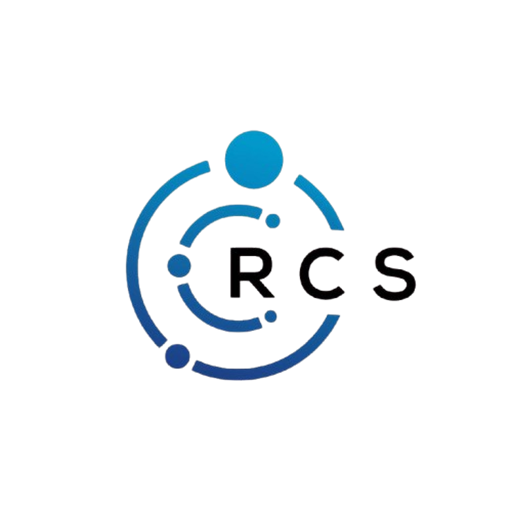Software systems are the backbone of almost every modern industry. From finance to healthcare, from e-commerce to education, every sector depends on reliable applications to keep things running smoothly. However, as software becomes more advanced, errors and unexpected glitches are inevitable. One such issue that has puzzled many developers and end-users is the software error rcsdassk.
In this detailed guide, we will break down what this error is, why it happens, and how to resolve it effectively. We’ll also cover preventive measures, troubleshooting strategies, and best practices for avoiding similar issues in the future. Whether you are an IT professional, a software developer, or just a regular user who has encountered this error, this article will help you gain a complete understanding of the problem and its solutions.
1. What is Software Error RCSDASSK?
Software error rcsdassk is a type of runtime or system error that typically occurs when an application cannot execute certain commands or processes properly. Although the exact meaning of “rcsdassk” may vary depending on the platform or environment, it is often linked with misconfigurations, corrupted files, or conflicts between different software modules.
Unlike minor bugs that may only affect a single function of an application, this error can cause the entire program to stop functioning. Users often report sudden crashes, freezing, or error pop-up messages that disrupt workflow.
2. Common Causes of the Error
To fix any error effectively, it is essential to understand what causes it. Based on reports and case studies, here are the most frequent reasons for the software error rcsdassk:
a. Corrupted System Files
If critical files within the application or operating system become corrupted, the program may fail to execute properly, leading to this error.
b. Outdated Software Versions
Running outdated versions of the software can cause compatibility issues with newer operating system updates, resulting in runtime errors.
c. Conflicting Applications
Sometimes, two or more programs interfere with each other by accessing the same resources, leading to system instability.
d. Improper Installation or Updates
Incomplete installation or interrupted updates may leave behind broken files or misconfigured settings.
e. Memory or Disk Issues
Insufficient memory (RAM) or storage problems can also trigger this error, especially when dealing with resource-intensive software.
3. Symptoms of the Error
Identifying the symptoms can help in diagnosing the problem quickly. Some of the most common signs include:
-
Sudden crashing of the application
-
Freezing or unresponsive user interface
-
Frequent pop-ups displaying “software error rcsdassk”
-
Slow system performance after the error appears
-
Inability to launch the application at all
4. Step-by-Step Guide to Fix the Error
Here is a comprehensive guide on how to resolve the error systematically.
Step 1: Restart Your System
Sometimes, the error may simply be temporary. Restarting clears the cache memory and reloads system resources, which can solve the issue instantly.
Step 2: Check for Updates
-
Application Updates: Ensure the software throwing the error is updated to the latest version. Developers often release patches that fix known bugs.
-
Operating System Updates: Outdated OS versions may not support certain application features. Keeping your OS updated reduces such risks.
Step 3: Repair or Reinstall the Application
If the software installation has been corrupted, repairing it through built-in repair tools or reinstalling it entirely is an effective fix.
Step 4: Scan for Malware and Viruses
Malware can corrupt files and interfere with software processes, causing runtime errors. Run a full system scan using a trusted antivirus tool.
Step 5: Free Up System Resources
Close background applications that are not in use. This frees up memory and processing power for the application that is crashing.
Step 6: Check System Files
On Windows, you can run the System File Checker (SFC) tool:
This scans and repairs corrupted system files that may be causing the error.
Step 7: Adjust Compatibility Settings
If the error appears due to compatibility issues, try running the program in compatibility mode for an earlier version of Windows (or equivalent OS settings for Mac/Linux).
Step 8: Reconfigure System Settings
Advanced users may need to check registry entries or configuration files linked to the application. Incorrect entries should be corrected or reset to the default.
5. Preventing Future Errors
Once the issue has been resolved, it’s important to adopt preventive strategies to avoid recurrence.
-
Regular Updates: Keep both your operating system and applications updated.
-
Backup Files: Maintain backups of important system and software files.
-
Antivirus Protection: Install reliable antivirus software to keep your system safe.
-
System Optimization: Regularly clear cache, temporary files, and perform disk cleanups.
-
Avoid Forced Shutdowns: Shutting down a system incorrectly may lead to file corruption.
6. Advanced Troubleshooting Techniques
For users with technical expertise, here are additional methods:
-
Event Viewer Logs: On Windows, check Event Viewer to see detailed logs about when and why the error occurred.
-
Debugging Tools: Developers can use debugging environments to trace code execution and locate faulty commands.
-
Safe Mode Testing: Booting the system in Safe Mode helps determine if third-party apps are causing the issue.
-
System Restore: Roll back your computer to a restore point before the error started appearing.
7. Real-World Example
Imagine a company using a custom enterprise resource planning (ERP) application. After a routine Windows update, employees start encountering the software error rcsdassk every time they launch the program.
-
IT staff first identify that the software version is outdated.
-
They update the ERP application, but the issue persists.
-
After checking Event Viewer logs, they realize that a corrupted configuration file is responsible.
-
The team reinstalls the application, reconfigures the settings, and the error disappears.
This example highlights how step-by-step troubleshooting can help identify the root cause and resolve the issue effectively.
8. When to Seek Professional Help
Sometimes, despite all efforts, the error may persist. In such cases, it’s best to seek professional help. Here are scenarios where professional assistance is recommended:
-
If the error is preventing critical business operations
-
When system crashes lead to data loss
-
If you are not confident editing system files or registry entries
-
When multiple users across a network encounter the same error simultaneously
Professional IT services or the software vendor’s support team can provide advanced solutions that go beyond general troubleshooting.
9. Best Practices for Software Management
To minimize the chances of encountering errors like this, businesses and individuals should adopt strong software management practices:
-
Use Licensed Software Only: Pirated or unverified software often lacks proper support and updates.
-
Create a Maintenance Schedule: Regularly check software health and perform system optimizations.
-
Educate Users: Train employees or users on safe practices, such as not downloading unverified files.
-
Monitor Performance: Use monitoring tools to detect potential issues before they escalate.
10. Conclusion
Errors are an unavoidable part of the digital world, but with proper knowledge and strategies, they can be managed effectively. The software error rcsdassk may look intimidating at first, but with the right step-by-step troubleshooting process, most users can resolve it on their own.
By following preventive measures, performing regular updates, and maintaining system health, you can ensure smoother software performance in the long run. And if the problem persists beyond general troubleshooting, don’t hesitate to seek professional technical assistance.
Staying proactive in managing software and system health is the key to minimizing disruptions and maximizing productivity in today’s technology-driven world. See more

